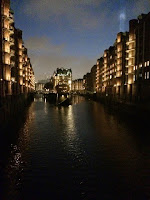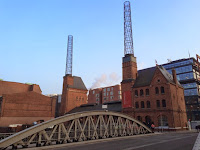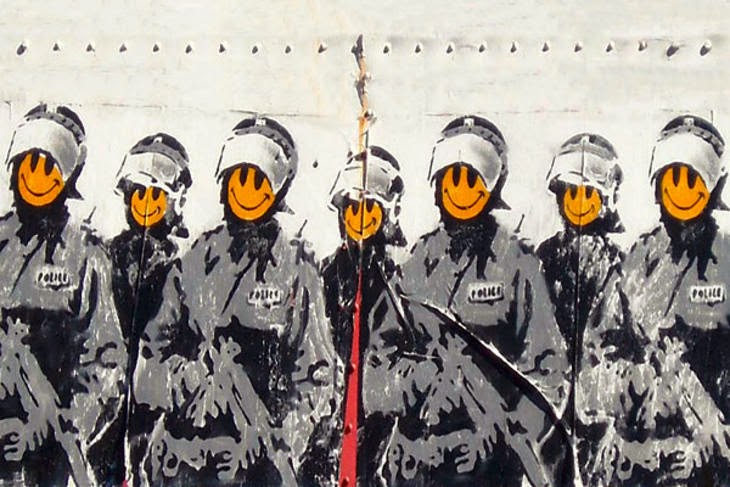 Though it is probably not possible to legislate morality or majority opinion with controls and tactics that paradoxically would not wilt before Corporate Europe Observatory’s latest fact-finding report, the group, which is devoted to uncovering cronyism, revolving-door political appointments and general corruption within the EU halls of power, hopes to at least sham-shame those European public-relations firms that play the willing sophist—with bogus, whitewashed blather—to some of the world’s most brutal regimes. One would think that one can only recognise ruthlessness in hindsight, given what image-makers can do, and how a little, well targeted character assassination can obscure real assassinations. The detailed study with eighteen cases can be perused at the link.
Though it is probably not possible to legislate morality or majority opinion with controls and tactics that paradoxically would not wilt before Corporate Europe Observatory’s latest fact-finding report, the group, which is devoted to uncovering cronyism, revolving-door political appointments and general corruption within the EU halls of power, hopes to at least sham-shame those European public-relations firms that play the willing sophist—with bogus, whitewashed blather—to some of the world’s most brutal regimes. One would think that one can only recognise ruthlessness in hindsight, given what image-makers can do, and how a little, well targeted character assassination can obscure real assassinations. The detailed study with eighteen cases can be perused at the link.
Tuesday 17 February 2015
green-shoots or brussel-sprouts
catagories: 🇪🇺, 📐, 🧠, environment, foreign policy, philosophy
talvisota tai finmark
The young country of Finland found itself in a very unenviable position just after the start of WWII. Until 1809, Finland had been a part of the Kingdom of Sweden, until Imperial Russia conquered the territory to provide a buffer-region (a march) to protect Saint Petersburg during the Napoleonic Wars. This freshly created Duchy of Finland, however, took the chance to break free during the chaos of successive revolutions and civil wars that visited Russia and was able to declare independence in 1918, just before the peace was brokered for WWI.
catagories: 🇩🇪, 🇪🇪, 🇫🇮, 🇷🇺, 🌍, 🎓, foreign policy, language, revolution
herbaceous or victory garden
Whether an aspiring chef, herbalist or witch, this guides provide a nice reference for what potions you might be able to grow in your window-sill garden and gives a brief explanation of their traditional uses. Like the contributors, I had problems sourcing these charts back to their origin—there’s only the shop’s website, an emporium, of course of herbs and spices, which does not seem to carry prints of these items, like those pretty ubiquitous mushroom and cheese medleys, but otherwise, it seems to be a pretty sly case of guerilla marketing.
catagories: ⚕️, 🌍, 🌱, 🗺️, food and drink
five-by-five
crucible: Norway’s memorial to victims of its witch-trials
stereoscope: the classic View-Master gets a virtual-reality upgrade
there and back again: illustrations of the Hobbit from all over the world
fleuron and range-dash: rather convincing illustration of how typewriters have destroyed the art of type-setting
think different: one’s next ride could be an Apple product
catagories: 🇳🇴, 📐, 📚, myth and monsters, transportation
able i was, ere i saw elbe
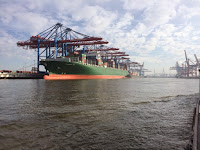
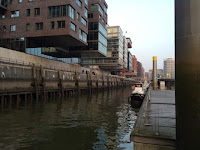
Here are a few parting-impression of our little trip to Hanseatic Hamburg, one of three of Germany’s city-states but unique in many ways. Though our exposure was limited to the usual tourist-experience, it struck me as quite livable, more so than other metropolitan areas—though there were distinct signs of gentrification and I had the feeling that denizens were cleft if not to their class but to the demographics of their boroughs, a truth about gentrification that was probably peppered by the voting Sunday and campaigning in the air.
 It was also quite striking to me how this city, this inland empire, as close to the Baltic as to the Atlantic, controlling only the narrows of the Elbe for trade, has retained its dominance, even as many other knots only over-land and over-sea routes have faded.
It was also quite striking to me how this city, this inland empire, as close to the Baltic as to the Atlantic, controlling only the narrows of the Elbe for trade, has retained its dominance, even as many other knots only over-land and over-sea routes have faded. It seems a lot of naturally endowed infrastructure, staging has been forgot, whereas Hamburg remains an attractive force. There are outposts, once regaled in the same way, along the roads that once brought trade between the great cities, usually anchored to the seaways, but have only memories to show for their strategic locations. I am grateful, however, that Hamburg preserved its heritage and has only grown its capacity for import-export, without regard for how the paradigm of trade might have changed.
It seems a lot of naturally endowed infrastructure, staging has been forgot, whereas Hamburg remains an attractive force. There are outposts, once regaled in the same way, along the roads that once brought trade between the great cities, usually anchored to the seaways, but have only memories to show for their strategic locations. I am grateful, however, that Hamburg preserved its heritage and has only grown its capacity for import-export, without regard for how the paradigm of trade might have changed.
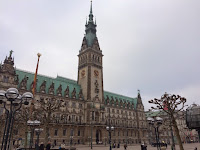
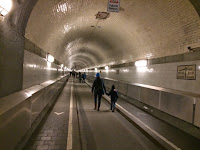 There’s a genuine character that’s formed and sustained the famous Reeperbahn (named after the street where the rope-weavers lived) and Saint Pauli, despite the tourists but maybe because. Not far afield from its renowned football-pitch lies a brutal-looking WWII era anti-aircraft tower. The finely- tiled old Elbe tunnel is buried deep underneath the river and the narrow lane is open to cars during rush-hour and not just foot traffic.
There’s a genuine character that’s formed and sustained the famous Reeperbahn (named after the street where the rope-weavers lived) and Saint Pauli, despite the tourists but maybe because. Not far afield from its renowned football-pitch lies a brutal-looking WWII era anti-aircraft tower. The finely- tiled old Elbe tunnel is buried deep underneath the river and the narrow lane is open to cars during rush-hour and not just foot traffic.The bureaucracy has created a unique skyline, as has the corporate headquarters and the prestige-projects, like the newly added Elbe-Philharmonic, that are terriors of the shipping business that remains as big and prominent as ever. With some two-thousand four-hundred bridges, Hamburg has the most crossings of any city on Earth and has more canals than both Amsterdam and Venice combined. I am not sure if that figures in number or volume, as Venice did seem to be unsurpassed in the quirkiness of its waterways.
 The architectural heritage of the city, blocks of warehouses that until recently characterised a free-trade zone, are really transfixing when set against the history and machinery—the cranes and cargo containers, and, as office-space for any business wanting a foothold, still are prized real-estate and without, out-priced, denigrating where one might hang his shingle. I am really glad that we had the chance to visit and spend a few days discovering, and I am looking forward to going back in warmer weather, even if that means braving the crush of other visitors and not having the place all to our selves.
The architectural heritage of the city, blocks of warehouses that until recently characterised a free-trade zone, are really transfixing when set against the history and machinery—the cranes and cargo containers, and, as office-space for any business wanting a foothold, still are prized real-estate and without, out-priced, denigrating where one might hang his shingle. I am really glad that we had the chance to visit and spend a few days discovering, and I am looking forward to going back in warmer weather, even if that means braving the crush of other visitors and not having the place all to our selves.




